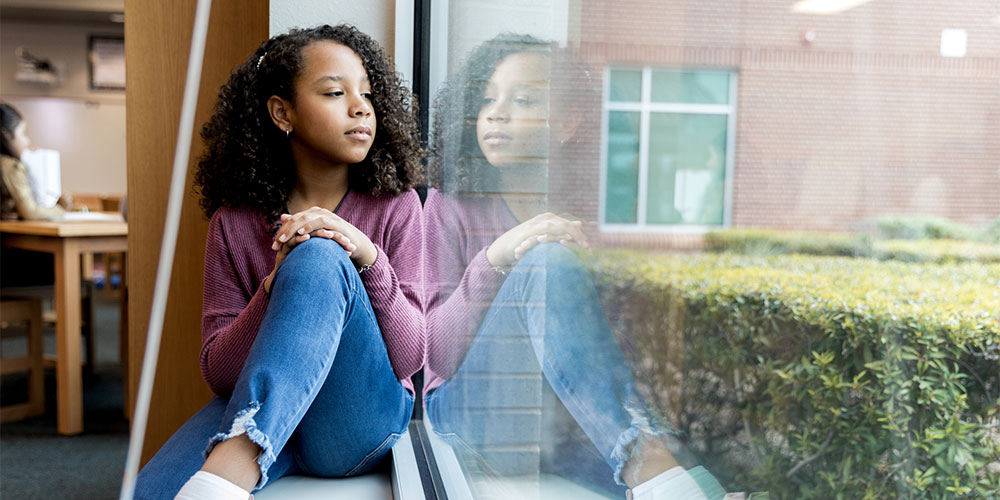When it’s prioritized, social–emotional learning embodies what it means to learn, grow, and create a brighter world. That’s the purpose of education in a nutshell. Beyond the surface level, quality SEL means forming healthy bonds with others, navigating difficult times with grace, setting boundaries, and showing kindness to all human beings.
And those ideas remain especially paramount for the average middle schooler.
If you think back, you may remember what those three middle grade years were like. Suddenly, we turned in milk cartons for soda machines. Our breaks between classes became semi-unsupervised. Teen drama went from television tropes to everyday reality. And while those changes might have made us feel more grown-up, the social evolution created complications most of us never anticipated.
SEL will ease the often-turbulent transition the average middle schooler experiences.
The Modern Middle Schooler: A Brief Psychological Profile
Middle school involves new challenges, both academic and social. In shedding their status as an elementary student, the typical middle schooler has taken a giant leap from the comforts and routines of the early grades. The abrupt nature of entering adolescence often tests the limits of students’ ability to cope with the number and degree of changes coming their way.
Can the maturity required for success in the middle grades manifest on its own, without a little nudging from middle school teachers? Probably not, and there’s a reason for that. In short, it’s really hard being this age. As educators, we can’t pass off these challenges as mere growing pains.
In more concrete terms, the modern middle schooler experiences:
- A changing social dynamic that involves romance, community hierarchy, and new forms of bullying. In other words, the school environment changes in an abrupt and reconstructive manner. Suddenly, kids are vying for status, and may change their disposition to reach a higher standing on the food chain.
- A need for community grouping that likely never existed before entering the middle school building. Very quickly, previous friendships may evolve or dissolve altogether. While social changes are expected, they are nevertheless painful at times.
- Physical changes that might disorient students in a way that impacts their academic performance. Yes, puberty is a challenging life event, and given that not every kid experiences the changes at the same time, some students may struggle or feel confused about what is or is not happening to their body.
Needless to say, things are getting complicated. So, what can we do?
Install SEL curriculum that jives with the psychology of the modern middle school student. To that degree, a recent SPARK study, which measured the impact of SEL curriculum for 357 students in two middle schools, found across-the-board positive outcomes.
Results included major advancements in decision-making, communication, emotional regulation, fluid communication, general problem solving, and resilience in the face of adversity. What’s more, researchers uncovered positive improvements that stretched beyond soft skills, with students showing a greater understanding of core academic curriculum.
Given how these three years are a transitive and tumultuous experience for so many young people, we can’t scoff at the kind of progress that not only deflects negative circumstances, but also equips kids with a social–emotional toolkit that leads to a more positive overall learning experience.
Five Components of SEL and the Middle School Student
SEL aims to enhance self-awareness, self-management, social awareness, relationship skills, and responsible decision-making. But what does that mean for the middle school student, who (let’s face it) experiences a more complicated educational experience than other age groups?
Self-Awareness in Middle School
Middle schoolers often find themselves at different starting gates when it comes to controlling emotions, recognizing the validity of their thoughts, coming to terms with limitations, and being conscious of how these factors influence their behaviors. SEL starts to give kids a common language for these struggles, allowing them to communicate with their peers and the adults in their lives rather than bottle up the challenges they encounter.
Self-Management in Middle School
Self-management becomes especially pertinent for this age group. When they enter those doors, middle schoolers automatically receive more freedom and control over how they perform in school. In this way, they must be cognizant of how to set quality goals and follow up with them. Independence is so important, but with the new responsibility comes a new chance to falter.
Social Awareness in Middle School
Social dynamics are changing in a major way. Cliques are forming. Students often develop romantic infatuations with their peers. Kids begin to question the values instilled by family. In other words, life is complicated, which means it’s so crucial to learn empathy, establish behavioral expectations, and know where to find resources and support.
Relationship Skills in Middle School
Middle school involves developing and changing social connections. New, sudden, and unexplainable feelings pop up at this age, which makes it difficult to nurture old friendships and cultivate new relationships. Success boils down to quality communication that enables young people to navigate conflict and offer help and support to those who need it.
Making Positive Choices in Middle School
Our choices bear more weight as we get older. This is especially true for the average middle school student, who must learn how to make constructive choices that will improve their circumstances and not harm others. Middle schoolers can learn how to predict the consequences of their actions and make decisions that increase their peers’ well-being.






